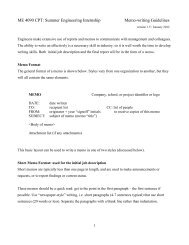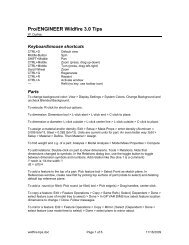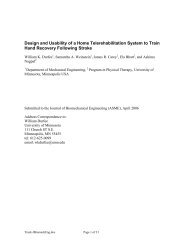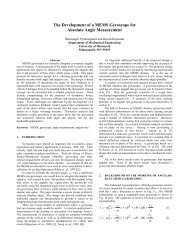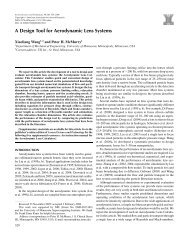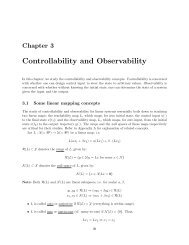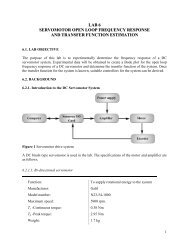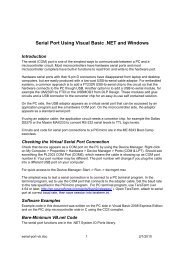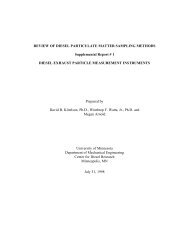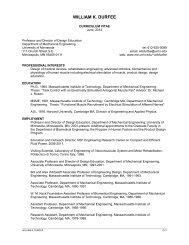Review of diesel particulate matter sampling - Department of ...
Review of diesel particulate matter sampling - Department of ...
Review of diesel particulate matter sampling - Department of ...
You also want an ePaper? Increase the reach of your titles
YUMPU automatically turns print PDFs into web optimized ePapers that Google loves.
• Light absorption cross sections for <strong>diesel</strong> particles observed in this study ranged from 5.7<br />
to 6.1 m 2<br />
/g and did not seem related to particle size. Light scattering cross sections<br />
ranged from 1.5 to 3.9 m 2 /g and increased with particle size. Thus, coagulation growth<br />
should not have a strong influence on light absorption cross sections but may increase the<br />
light scattering cross sections <strong>of</strong> <strong>diesel</strong> particles as they age in the atmosphere.<br />
Table 9 summarizes the properties <strong>of</strong> the aerosol size distributions measured in this study.<br />
The range <strong>of</strong> N/VT (number <strong>of</strong> particles divided by EAA volume concentration) ratio (2,300<br />
to 62,000) is similar to the one reported by Whitby, et al. (1975). Kittelson (1998a)<br />
summarizes the data from the Kittelson, et al.(1988) study and additional data from the<br />
University <strong>of</strong> Minnesota and others in table 10. It is clear from these tables that N/VT ratio<br />
and thus the number <strong>of</strong> particles emitted per unit mass <strong>of</strong> <strong>particulate</strong> <strong>matter</strong> are highly<br />
variable. The results suggest that N/VT ratios in the range <strong>of</strong> 50,000 to 60,000 part./μm 3 (or,<br />
assuming spherical, unit density particles, 5 to 6 x 10 16 particles per gram <strong>of</strong> emitted particle<br />
mass) are probably not uncommon for older <strong>diesel</strong> and SI engines under highway cruise<br />
conditions. This is consistent with the N/VT ratio <strong>of</strong> 26,000 (Kittelson, et al., 1988) observed<br />
over a rural freeway under mixed traffic conditions. This ratio is lower than source levels<br />
because <strong>of</strong> dilution with aged ambient aerosol and coagulation. The values <strong>of</strong> 120,000 to<br />
360,000 observed by Bagley, et al. (1996) are significantly higher than reported for other<br />
engine types. The only way such a high N/VT ratio was produced at the University <strong>of</strong><br />
Minnesota was when a <strong>diesel</strong> engine equipped with a catalyst in an <strong>of</strong>f-design was operated in<br />
the laboratory under high load condition that led to significant sulfate formation. This led to<br />
an N/VT ratio <strong>of</strong> 400,000.<br />
Table 9. Properties <strong>of</strong> <strong>diesel</strong> exhaust size distributions (Kittelson, et al. 1988)<br />
Property Ccp /Ct m/VT<br />
g/cm 3<br />
N/VT<br />
part/μm 3<br />
VN/VT Ec DGVn μm<br />
DGVa μm<br />
Range 0.12 - 0.2 1.2 - 2.2 2,300 - 0 - 0.35 0 - 0.38 0.022 - 0.19 - 0.34<br />
62,000<br />
0.032<br />
Typical<br />
value<br />
0.15 1.2 NA NA NA 0.025 0.25<br />
Ccp /Ct m/VT<br />
Mass fraction <strong>of</strong> particles with aerodynamic diameters greater than 0.9 um.<br />
Submicron filter mass concentration divided by EAA volume concentration.<br />
N/VT Number <strong>of</strong> particles divided by EAA volume concentration.<br />
VN/VT Volume fraction in the nuclei mode.<br />
Ec DGVn DGVa NA<br />
Solvent extractable fraction.<br />
Geometric volume mean diameter <strong>of</strong> nuclei mode.<br />
Geometric volume mean diameter <strong>of</strong> accumulation mode.<br />
Highly variable so that defining a typical value was not appropriate.<br />
01/14/99 Page 36



